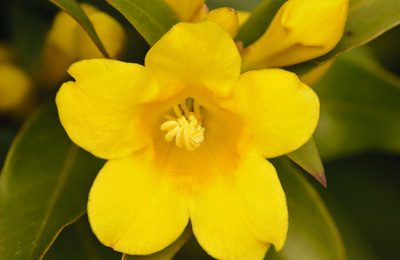My mountain laurel has white spots on it? Are they harmful?
Thanks to Alison Hammerbacher for this great question and picture of her mountain laurel. She
wrote, “My Texas mountain laurel has a fine white substance on its leaves, and there are some places where the leaf is partially solid white. Any ideas what this could be and what should be done for it?”
Well, Alison, the white areas in your photo don’t appear to be due to any external substance on the leaves. Actually, the leaf tissue itself appears to be white. The affected areas seem to have been physically damaged, and that physical damage destroyed the chlorophyll in those areas, leaving behind an area lacking in pigment, or, a white spot.
I can’t be quite certain from this photo, but a few of the spots look like they may be skeletonized. Skeletonizing is a damage pattern caused by the feeding of certain insects that chew the soft portions of the leaf tissue, leaving the veins intact.
The white areas on your mountain laurel leaves are not fungal, from what I can see in the photo, just physically damaged and lacking chlorophyll. The good news is, there’s so little damage and the plant is so healthy, that I don’t think there’s anything to worry about, regardless of the root cause. It’s old damage and the plant has now recovered quite well, so there’s no need to treat.

 Mary Lew Quesinberry
Mary Lew Quesinberry Daphne Richards
Daphne Richards
 Trisha Shirey
Trisha Shirey